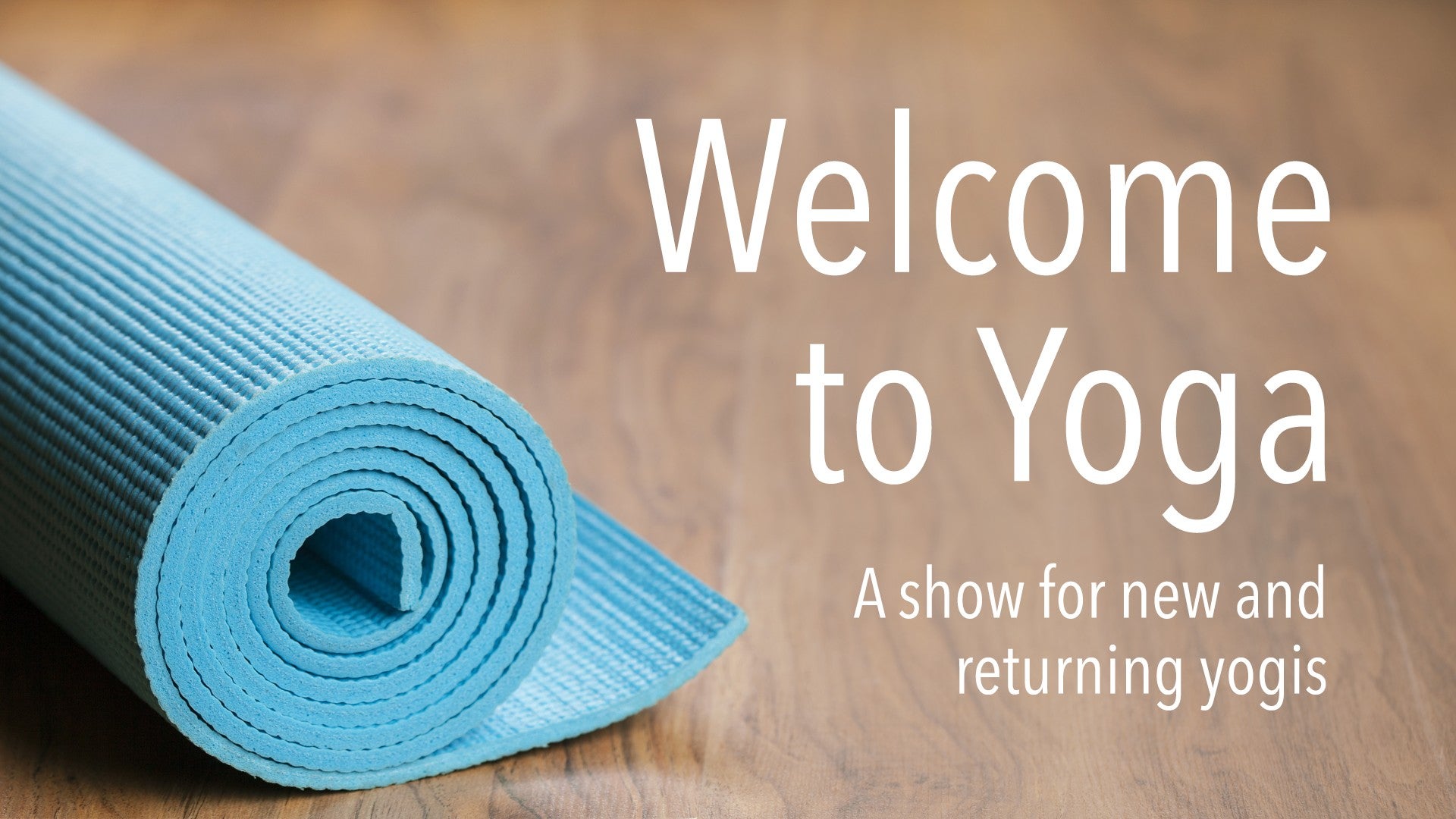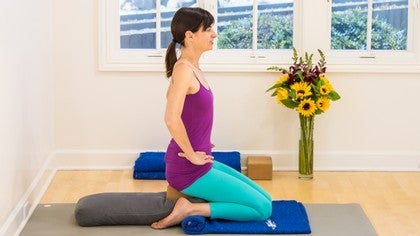Description
About This Video
Transcript
Read Full Transcript
Hello, and welcome. Many yoga practices and meditation practices are in a seated position, and there's an assumption that people can just sit down on the floor and be fine, but that's actually not real. Most human beings, especially people who sit in a chair, which is all of us, or drive, have pretty tight hips so that we have a predicament that when we get to our yoga class or meditation we sit on the floor, the tightness in the hips pulls on the bones of the pelvis, pulls the pelvis under, the low back rounds, the chest collapses, the knees lift and the head juts forward and we try to attain a state of enlightenment with no clarity in our bodies. So, in this practice we're going to look at different ways to sit so that you'll have a toolbox of options, ways that you can find a comfortable seat because it's very important that you're not suffering when you're sitting. The chair is a great tool, most everybody can sit in a chair with a pelvis that is upright.
The pelvis is Latin, the word pelvis is Latin for "bowl", and the pelvis is much like a bowl, and in that bowl sits your spine that rises up. I think of it like a big sunflower stalk in a pot. So you want to have your pelvis upright so that your spine can lift and your organs can have space. So always feel free to sit on a chair in a seated practice and I'll show some options now for sitting on the floor, so we will lose the chair. So we'll look at the options now for the seats on the floor.
Basically you want to build up your seat as high as you need it to be. It can even be almost as high as a regular chair, or, it may be on one blanket or even sitting just flat on the mat. Some people, even if you've never practiced yoga before, the way that your bones are, your genetics are, you'll be just fine sitting down onto the mat, so that's also a possibility. However, for most people, finding a bolster, maybe a bolster with a blanket on top, and you won't know what the appropriate seat is until you try a bunch of things out. And then once you find out what works for you, it may not work for you tomorrow.
So it's always kind of an exploration. So here's an example of a seated position that might work for you. I have one blanket on top of a bolster, I might also put two blankets on top of a bolster. It's good to sometimes switch the way your legs are crossed, and if you have any knee pain, or if it just feels like there's too much floating sensation in your thighs or your knees, you're welcome to use props underneath the thighs, maybe find the blocks. And it's always an experiment to figure out what works, but, for example, here for myself I have the blocks supporting my thighs and it feels very nurturing.
It feels like a big hand underneath me, holding me. Another option is to have a blanket, open it up, roll it up, put it in front of you. And this would be probably instead of the blocks, it has the same kind of effect. You take the rolled blanket, put it in front of your shins, and then tuck it underneath your knees to give you a nice base of support. Another nice way to sit is in a pose called Virasana.
Virasana is "hero's pose", and it can be a little bit hard on the bones of the knees and the ankles, so I like to put a blanket underneath the whole base of the pose. Virasana is an even pose, so unlike the cross-legged poses where there's one leg in front, Virasana is even right to left. It's a kneeling pose, the knees are close together, feet are apart, and then you'll put a prop, perhaps two blocks, again, you got to be your own architect and build it as you need it. So, two blocks underneath the seat, feels supported to me at this moment, but again, it's your own exploration. If it feels too high, you may lower.
A common issue that comes up in this pose is tightness at the front of the ankle. If you're experiencing tightness at the front of the ankle, you can put a little support underneath the front of the ankle by rolling up your blanket, and then putting the blanket right at the top of the ankle, and then again you'll want to pull a prop probably underneath your sitting bones. I am going to use a bolster and even put a block on top of the bolster, so I am propped up supported underneath the ankles and some softness underneath the knees. So take a moment now to find which seat works best for you, whether it be in the chair, in one of the cross-legged positions, or on your shins. And find the seat, and let your pelvis, once you get to your seated position, just rock a little bit, back and forward.
So you're massaging the very base of your sitting bones. And as you're rocking over these sitting bones, the pelvis, the whole pelvis is responding, the sitting bones are part of your pelvis. And the spine is also responding. In anatomy terms, sitting bones are called ischial tuberosities, which I like because it has the word "tuber", like a potato they grown down, they anchor you down into the earth. So find yourself now right balanced on the tops, or the bottoms of your ischial tuberosities.
Try to balance right to left as well. And then sense your spine growing up, out of the bowl of the pelvis. Feel the crown of the head light, the shoulders relaxed back and down. And both a connection into the earth, as well as up into the vast sky. Thank you for joining me.
I hope you have many rooted seats, which provide great joy and comfort to you. Namaste.
Welcome to Yoga: Explore the Fundamentals
Comments
You need to be a subscriber to post a comment.
Please Log In or Create an Account to start your free trial.









